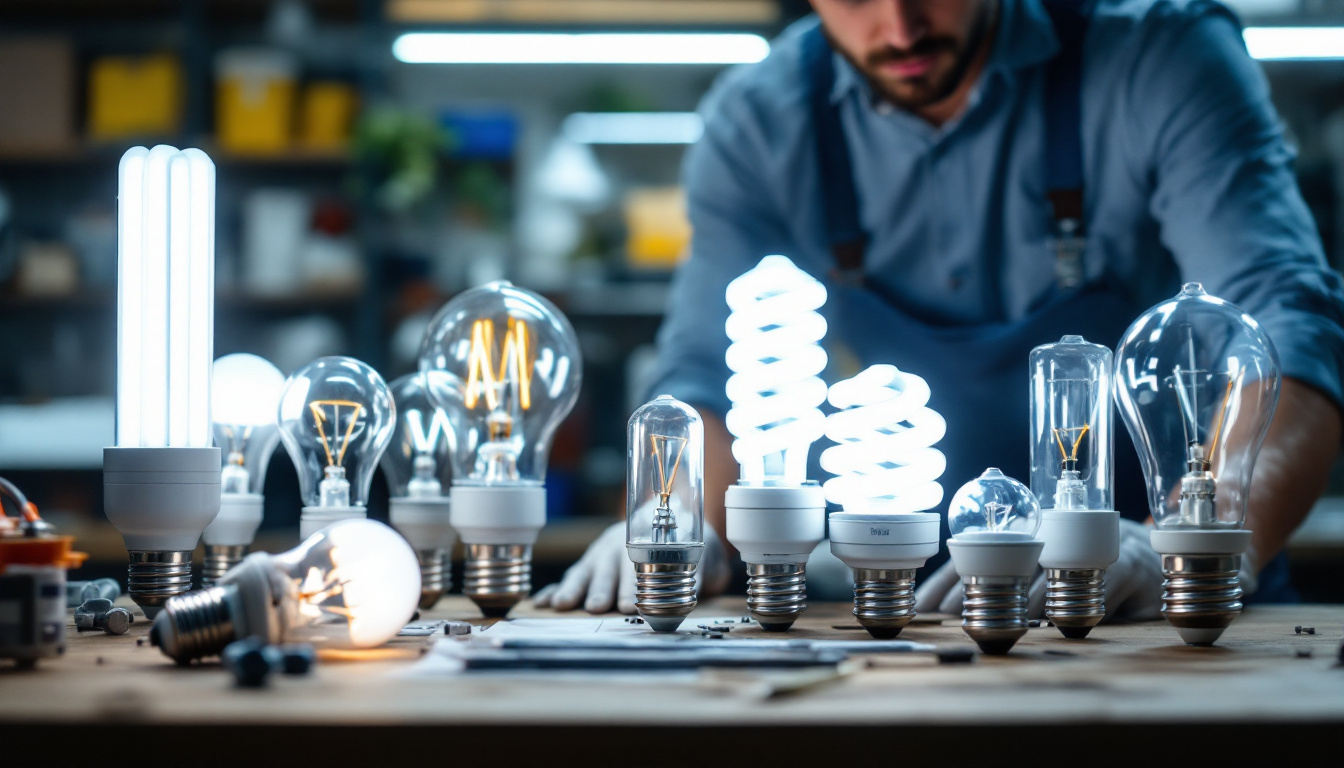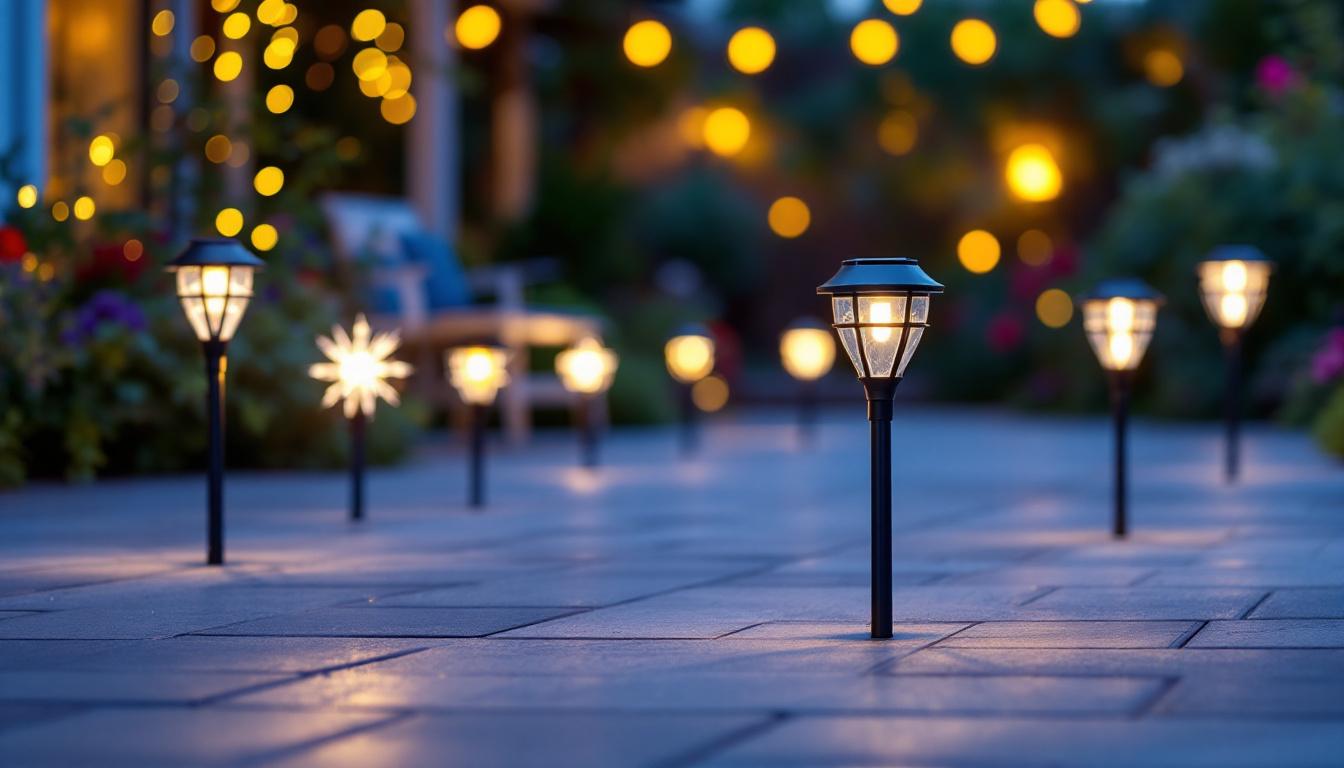
As the demand for energy-efficient and aesthetically pleasing lighting solutions continues to rise, recessed lighting has become a popular choice for both residential and commercial spaces. Lighting contractors play a crucial role in selecting the right types of recessed light bulbs for their projects. Understanding the various options available can significantly enhance the quality of installations and client satisfaction. This article explores the types of recessed light bulbs and highlights five reasons why lighting contractors should prioritize their selection.
Recessed lighting, also known as can lighting or downlighting, involves fixtures that are installed into the ceiling, creating a clean and streamlined appearance. These lights can serve various purposes, from providing general illumination to accentuating specific areas or features within a space. The choice of light bulb plays a vital role in determining the performance and effectiveness of recessed lighting.
Choosing the right recessed light bulb is essential for achieving the desired ambiance and functionality. Different types of bulbs offer varying levels of brightness, color temperature, and energy efficiency. Lighting contractors must consider these factors to meet the specific needs of their clients and the requirements of the space. For instance, warmer color temperatures (around 2700K) are often preferred in living rooms and bedrooms for a cozy atmosphere, while cooler temperatures (5000K or higher) are more suitable for workspaces and kitchens, promoting alertness and focus.
There are several types of recessed light bulbs available on the market, each with its unique characteristics. The most common types include incandescent, halogen, compact fluorescent (CFL), and light-emitting diode (LED) bulbs. Understanding the differences between these options can help contractors make informed decisions that align with their clients’ preferences and project goals. Incandescent bulbs, while providing a warm glow, are less energy-efficient and have a shorter lifespan compared to their LED counterparts, which can last up to 25,000 hours and consume significantly less energy. Halogen bulbs, a type of incandescent, offer brighter light and better color rendering but also generate more heat. CFLs are more energy-efficient than traditional bulbs, but they can take time to reach full brightness and may not be ideal for all settings.
In recent years, LED technology has gained immense popularity due to its versatility and efficiency. LED recessed lights come in various styles, including adjustable and directional options, allowing for creative lighting designs that can enhance the architectural features of a space. Additionally, many LED fixtures are now dimmable, providing even more control over the lighting environment. As smart home technology continues to evolve, some recessed lighting systems can be integrated with home automation setups, enabling users to adjust lighting remotely or set schedules for different times of the day. This adaptability not only enhances convenience but also contributes to energy savings, making LED recessed lighting a top choice for modern homes.
One of the most compelling reasons for lighting contractors to prioritize the selection of recessed light bulbs is energy efficiency. With growing concerns about energy consumption and environmental impact, clients are increasingly seeking sustainable lighting solutions. The shift towards energy-efficient lighting is not just a trend; it reflects a broader societal commitment to sustainability and responsible resource management.
LED bulbs are renowned for their exceptional energy efficiency. They consume significantly less electricity compared to incandescent and halogen bulbs, making them an attractive option for clients looking to reduce their energy bills. Additionally, LED bulbs have a longer lifespan, which means fewer replacements and lower maintenance costs over time. This longevity is particularly beneficial in commercial settings, where the cost of labor and materials for bulb replacement can add up quickly. Furthermore, many LED bulbs now come with dimming capabilities, allowing users to adjust brightness levels according to their needs, which can lead to even greater energy savings.
By choosing energy-efficient recessed light bulbs, contractors can contribute to reducing the carbon footprint of their projects. LED bulbs, in particular, produce less heat and contain no harmful substances, making them a more environmentally friendly choice. As clients become more environmentally conscious, offering energy-efficient solutions can enhance a contractor’s reputation and appeal. Moreover, the use of LED technology aligns with various green building certifications, such as LEED, which can be a significant selling point for clients looking to improve their building’s sustainability credentials. The shift towards eco-friendly lighting solutions not only benefits the environment but also promotes a healthier indoor atmosphere, as reduced heat output can lead to lower air conditioning costs and improved comfort levels.
Recessed lighting offers versatility in design, allowing contractors to create customized lighting solutions that meet the unique needs of each space. The type of recessed light bulb selected can further enhance this versatility. This adaptability makes recessed lighting an excellent choice for both residential and commercial applications, as it can seamlessly blend into various architectural styles while providing functional illumination.
Different recessed light bulbs emit varying color temperatures, which can significantly affect the mood and atmosphere of a room. For instance, warm white bulbs create a cozy and inviting ambiance, making them ideal for living rooms and bedrooms. In contrast, cool white or daylight bulbs are better suited for workspaces or areas requiring bright, focused light. Additionally, the ability to choose from a range of color temperatures allows designers to tailor the lighting to specific activities; for example, warmer tones can enhance relaxation during movie nights, while cooler tones can boost productivity in home offices.
Many recessed lighting fixtures are adjustable, allowing contractors to direct light where it is needed most. By selecting the appropriate bulb type, contractors can enhance the effectiveness of these fixtures, ensuring that they provide the right amount of illumination in the desired areas. Furthermore, adjustable fixtures can be particularly beneficial in multi-functional spaces, such as open-concept living areas, where the lighting needs may change throughout the day. By strategically positioning and angling these fixtures, homeowners can create dynamic lighting schemes that adapt to various activities, from entertaining guests to enjoying a quiet evening at home.
In today’s tech-savvy world, the integration of recessed lighting with smart home technology has become increasingly popular. Homeowners can now control their recessed lights remotely via smartphone apps or voice-activated devices, allowing for effortless adjustments to brightness and color temperature. This level of control not only enhances convenience but also supports energy efficiency, as users can easily turn off lights in unoccupied rooms or set schedules to optimize usage. Moreover, the ability to sync lighting with other smart home features, such as security systems or automated blinds, can create a cohesive and responsive living environment that caters to the homeowner’s lifestyle.
The quality of light produced by recessed bulbs is a critical factor in creating a comfortable and functional environment. Lighting contractors should prioritize bulb selection to ensure optimal light quality in their installations.
The Color Rendering Index (CRI) measures a light source’s ability to accurately reproduce colors compared to natural light. Higher CRI values indicate better color accuracy. Lighting contractors should consider bulbs with a CRI of 90 or above for spaces where color accuracy is essential, such as art galleries or retail environments. This attention to detail can make a significant difference in how clients perceive the quality of light in their spaces.
Flickering light can be a significant annoyance and can even lead to discomfort or headaches for some individuals. When selecting recessed light bulbs, contractors should prioritize options that provide flicker-free illumination. LED bulbs, in particular, have made advancements in this area, offering smooth and consistent lighting that enhances the overall experience.
While the initial cost of certain recessed light bulbs may be higher, the long-term savings associated with energy efficiency and durability make them a cost-effective choice for contractors and clients alike.
LED bulbs, for example, can last up to 25,000 hours or more, significantly outlasting traditional incandescent bulbs, which typically last around 1,000 hours. This longevity means fewer replacements and reduced labor costs for contractors, ultimately leading to savings for clients.
By opting for energy-efficient recessed light bulbs, clients can enjoy lower energy bills. This cost-saving benefit is particularly appealing for commercial clients, where lighting costs can represent a significant portion of operational expenses. By emphasizing the financial advantages of energy-efficient options, contractors can position themselves as knowledgeable and resourceful partners in their clients’ projects.
As energy efficiency standards and building codes evolve, lighting contractors must stay informed about the latest regulations affecting recessed lighting installations. Prioritizing the selection of compliant recessed light bulbs can help contractors avoid potential issues and ensure that their projects meet all necessary requirements.
Many regions have implemented energy efficiency codes that dictate the types of lighting products that can be used in residential and commercial buildings. By staying up-to-date with these regulations, contractors can provide clients with compliant solutions that not only enhance energy efficiency but also ensure safety and legality.
In some cases, clients may be eligible for incentives or rebates when they choose energy-efficient lighting solutions. By prioritizing the selection of compliant recessed light bulbs, contractors can help clients take advantage of these financial benefits, further enhancing the appeal of their services. This proactive approach can foster trust and loyalty among clients, leading to repeat business and referrals.
In conclusion, the selection of recessed light bulbs is a critical aspect of any lighting contractor’s work. By understanding the various types of bulbs available and prioritizing energy efficiency, design versatility, light quality, cost-effectiveness, and compliance with regulations, contractors can provide exceptional service to their clients. As the lighting industry continues to evolve, staying informed and making strategic choices will be key to success in this competitive field.
Ultimately, the right choice of recessed light bulbs can enhance the overall quality of a lighting installation, leading to satisfied clients and successful projects. By prioritizing these factors, lighting contractors can position themselves as leaders in the industry, ready to meet the evolving needs of their clients and the market.
Ready to elevate your lighting installations with the best selection of recessed light bulbs? Look no further than LumenWholesale for all your lighting needs. Our commitment to quality, affordability, and convenience ensures that you have access to spec-grade lighting products at wholesale prices that simply can’t be beaten. Say goodbye to middleman markups and hello to hassle-free bulk buying with free shipping. Don’t compromise on performance or price. Choose LumenWholesale and make your next project shine with confidence. Discover the perfect blend of quality and value by visiting Wholesale Lighting at the Best Value today.

Discover essential tips and insights for lighting contractors navigating the diverse world of fluorescent light bulb sizes.

Discover essential insights into fluorescent strip lights with our comprehensive guide tailored for lighting contractors.

Explore how can lighting bulbs are revolutionizing the industry and becoming essential tools for lighting contractors.

Discover how decorative solar lights are revolutionizing outdoor spaces for lighting contractors.